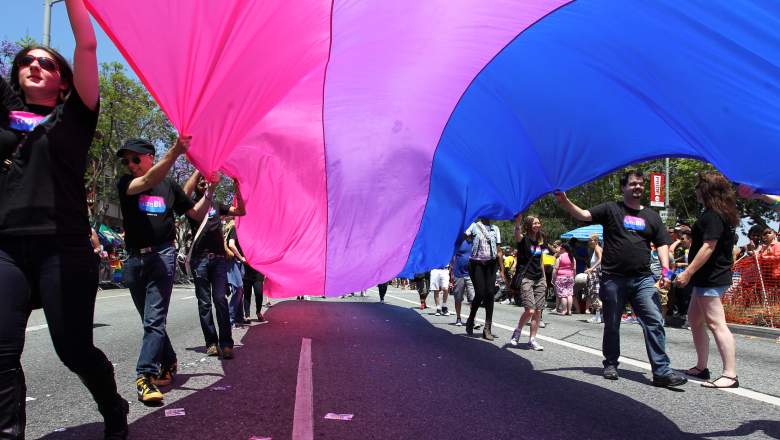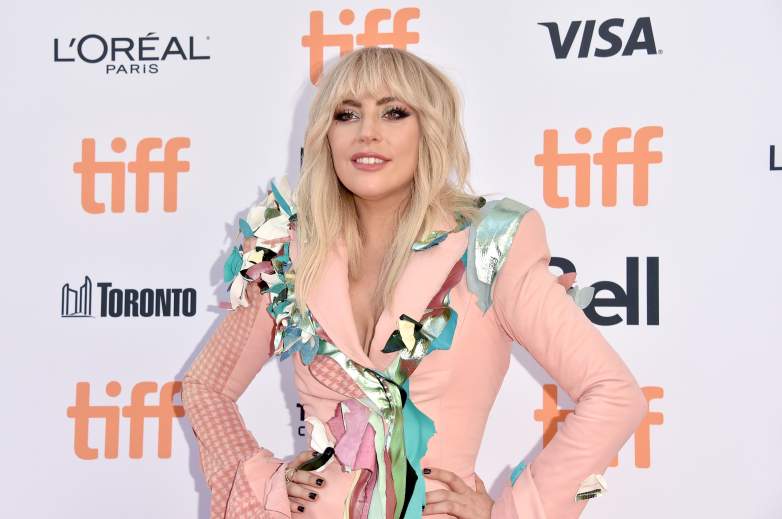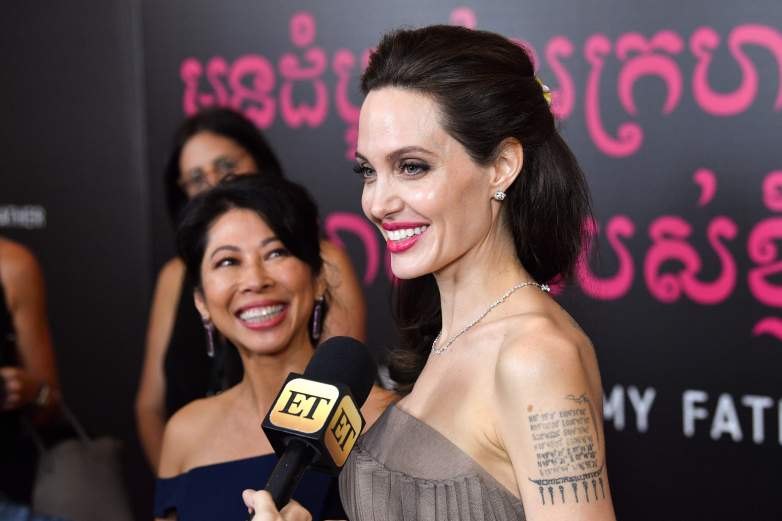
Getty The Bisexuality Flag being carried at a 2013 Gay Pride parade in Los Angeles.
Since 1999, September 23 has been Celebrate Bisexuality Day, also known as Bi Visibility Day. It was created to celebrate the bisexual community.
Bisexuality means that a person is romantically or sexually attracted to a person of any gender.
Here’s a look at the history of the holiday.
1. September 23 Was Chosen for Celebrate Bisexuality Day by Founders Wendy Curry, Michael Page & Gigi Raven Wilbur

GettyLady Gaga has said in the past that she’s bisexual.
Celebrate Bisexuality Day, or Bi Visibility Day, has been celebrated annually since 1999. It was created by activists Wendy Curry, Michael Page and Gigi Raven Wilbur, where were a group of BiNet USA National Coordinators at the time. In 2007, Curry wrote that they were inspired to create a day for the community because they wanted a day just for their community.
“The day was not an about education day. It was not a coming out day, it’s not about glbt partnerships building or proving ourselves to anyone else,” Curry wrote in 2007. “It’s not a ‘pride’ day, though many of us our proud. it’s not about usurping a gay event and making a smaller one for ourselves. it’s a truly unique day, just for us.”
She continued, “What we asked people to do was find some time on this day to celebrate who they are. That could be lighting a candle, saying a prayer, buying a bi pride flag, getting together with other bisexuals for brunch, having incredible sex, march somewhere, whatever they desired.”
As for the date, they decided to celebrate in September because it’s Freddie Mercury’s birth month. They chose the 23rd because it was on a weekend that year and it was one of their birthdays.
2. San Francisco Celebrated the First U.S. Bisexual Price Day in 1990

GettyAngelina Jolie is another actress who has said in the past that she’s bisexual.
BiNet USA found in 2013 that there was a Bisexual Pride Day long before Celebrate Bisexuality Day was born. In 1990, San Francisco named June 23, 1990 Bisexual Pride Day. The day was timed to the 1990 National Bisexual Conference.
According to BitNet USA, that 1990 conference was a major moment for the community and followed the growth of bisexuality groups throughout the world. In 1983, the Boston Bisexual Women’s Network, the oldest bisexual women’s group that still exists, started their Bi Women newsletter.
The following year, Dr. David Lourea succeeded in getting the San Francisco Department of Public Health to include bisexual men in its AIDS statistics. There was also the Bisexual Rights Rally during the 1984 Democratic National Convention in San Francisco. In 1987, 75 bisexual marchers joined the 1987 March On Washington For Gay and Lesbian Rights.
These events and many others culminated in the 1990 conference in San Francisco. The event included 450 attendees from 20 states and five different countries.
3. Michael Page Created the Bisexuality Flag in 1988 Because There Were ‘No Suitable Bisexual Icons’ at the Time
The bisexuality flag was created by Michael Page, one of the co-creators of Celebrate Bisexuality Day. He unveiled the flag in December 1988 and created it to give the community its own emblem, outside the familiar LGBT flag. He used the color purple, included in the LGBT flag.
“At that time, there were, in my opinion, no suitable bisexual icons that were colorful or prominent enough to gain instant and long lasting recognition as a flag,” Page wrote. “At the time, there were bi angles – an inverted double triangle, the bi symbol – a 3 looped symbol, and various shaped symbols created to represent local groups of bi people.”
Page wrote that the flag should be 20 percent purple, 40 percent pink and 40 percent blue. The pink represents attraction to the same sex only, the blue represents the sexual attraction to the opposite sex only and the purple represents the sexual attraction to both.
“The key to understanding the symbolism in the Bi Pride Flag is to know that the purple pixels of color blend unnoticeably into both the pink and blue, just as in the ‘real world’ where most bi people blend unnoticeably into both the gay/lesbian and straight communities,” Page wrote.
The Huffington Post reports that Page was a jet pilot who also founded the site BiCafe.com. The site is now-defunct and page is no longer active in the bi community.
4. A 10-Year Study Disproved the Myth That ‘Bisexuality is a Phase’
There are several myths about bisexuality that persist to this day, even though many of them have been debunked. One is the idea that “bisexuality is a phase.”
A 10-year study published in Developmental Psychology in 2008 by Lisa Diamond of the University of Utah found that some of the 79 lesbian and bisexual women in the study didn’t change their sexual identity. They rarely switched from bisexuality in adolescence to straight or lesbian in adulthood. Only eight percent of the group did.
“Over 10 years, 2/3 of women changed the identity labels they had claimed at the beginning of the study, and 1/3 changed labels 2 or more times,” Diamond wrote in her abstract. “Yet, contrary to the ‘transitional stage’ model, more women adopted bisexual/unlabeled identities than relinquished these identities; few bisexual/unlabeled women ended up identifying as lesbian or heterosexual.”
Another myth is that bisexuality doesn’t exist at all. Psychology Today notes that there is mounting evidence that it does, adding that researchers first recorded it back in the 1800s.
5. A 2016 National Survey by the Centers for Disease Control and Prevention Found That the Number of Americans Identifying as Bisexual Is Increasing
In January 2016, the U.S. Centers for Disease Control and Prevention Released its findings of a national study of data from 2011 to 2013, compiled from response from 9,175 adults aged 18 to 44. CNN notes that many aspects of the study were similar to previous ones. IT shows that 1.3 percent of women and 1.9 percent of men said they were homosexual.
However, the study showed that 5.5 percent of women considered themselves bisexual, compared to 3.9 percent in a 2006-2010 survey. Two percent of men considered themselves bisexual, compared to 1.2 percent in the previous survey.
“It’s certainly not a new idea that women and men may be attracted to more than gender,” Debby Herbenick, an associate professor at Indiana University who wasn’t involved in the survey, told CNN in January 2016. “But that doesn’t mean it’s an easy orientation to adopt. Women and men who self-identify as bisexual experience stigma not just from heterosexuals but also homosexuals.”
